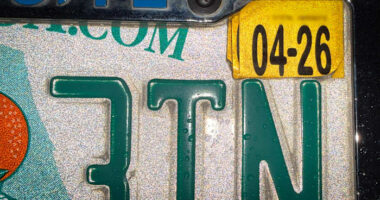Share this @internewscast.com

The latest move in President Donald Trump’s campaign against mail-in voting was unveiled on Monday, as he announced his desire to “lead a movement” against mail ballots. He advocates for in-person and paper ballots, stating that they are “faster, and leaves NO DOUBT, at the end of the evening, as to who WON, and who LOST, the Election.”
Trump has been a critic of mail-in ballots since their surge in popularity in 2020, following a history of gradual increase before becoming a significant factor during the Covid election. However, the process of counting mail-in votes contributed to a suspenseful wait of nearly four days before the election results were finalized.
This recent push by Trump could also serve as a tactical move in the ongoing redistricting battles. In California, state Democrats are seeking a mid-decade gerrymander in response to the Trump-led efforts by Republicans to create more favorable districts in Texas. Notably, California is a prominent adopter of mail-in voting and is among the slowest at processing these ballots.
Nationally, mail-in voting represented 30% of the total votes in the 2024 election, a decrease from the 43% peak in 2020. However, in California, mail-in voting accounted for 81% of the total vote, as highlighted in a recent report from the Election Assistance Commission.
Mail-in voting has posed significant challenges for many election administrators, including issues with voter and ballot verification and logistical complications like opening envelopes, safeguarding materials, and often hand-counting. The processes that occur in person at polling stations — notably checking in and verifying registration — can quickly accumulate when conducted by mail.
Among states with the highest percentage of mail-in voting in the 2024 election, California experienced significant delays in processing these votes. It set a record for the slowest progress by the morning after the election.
While Democrats have achieved steady success at the statewide level in recent years, California’s prolonged vote counts left the nation in suspense over which party would win control of the House of Representatives for days after the 2022 and 2024 elections.
Northern California’s Lake County didn’t reach the halfway mark tabulating its 2024 election results until more than two weeks after election night. Responding to scrutiny, the elections supervisor complained, “Why do we need to rush?”
Following the election, state legislation was introduced requiring counties to conclude a majority of their counting process 13 days after the election. The bill passed the state Assembly with bipartisan support and is in a state Senate committee seeking funding sign-off.
Meanwhile, Trump faces high legal and political hurdles to changing mail-in laws on his own at the federal level. Without new federal laws, states have wide latitude to set their own election procedures. And his recent post may just have been top of mind for him because of a prompt from Russian President Vladimir Putin.
But it’s also happening as California state legislators convened Monday to move forward on plans for a congressional map that, if approved by voters, would target five Republicans to lose their seats in the upcoming midterms. The effort was sparked by Democratic Gov. Gavin Newsom as a response to Texas Republicans’ congressional redraw seeking to fortify their majority.
It may put the redistricting wars and Trump’s renewed crusade on mail-in votes on a political collision course in the Golden State.












